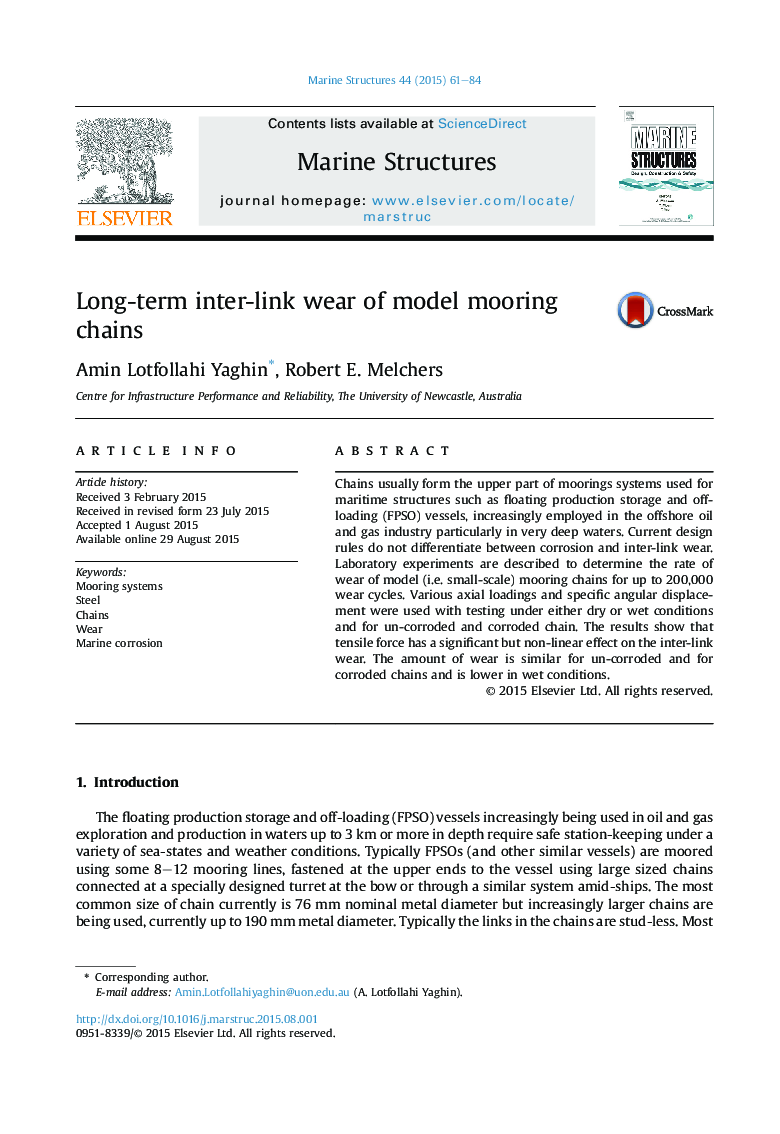| Article ID | Journal | Published Year | Pages | File Type |
|---|---|---|---|---|
| 294203 | Marine Structures | 2015 | 24 Pages |
•Laboratory wear tests of mild steel chains for various axial loads and for wet and dry conditions are presented.•Tests are carried out with use of a specially designed test rig capable of studying the effect of various parameters.•Chain wear is measured by mass loss and remaining bar diameter at the interlink region after a number of cycles are applied.•Non-linear increase of chain wear is shown for all tests with the increase in overall contact area as wear progresses.•Axial load capacity of worn chain is shown to be limited by the capacity of the edge of the worn zone in the interlink area.
Chains usually form the upper part of moorings systems used for maritime structures such as floating production storage and offloading (FPSO) vessels, increasingly employed in the offshore oil and gas industry particularly in very deep waters. Current design rules do not differentiate between corrosion and inter-link wear. Laboratory experiments are described to determine the rate of wear of model (i.e. small-scale) mooring chains for up to 200,000 wear cycles. Various axial loadings and specific angular displacement were used with testing under either dry or wet conditions and for un-corroded and corroded chain. The results show that tensile force has a significant but non-linear effect on the inter-link wear. The amount of wear is similar for un-corroded and for corroded chains and is lower in wet conditions.
